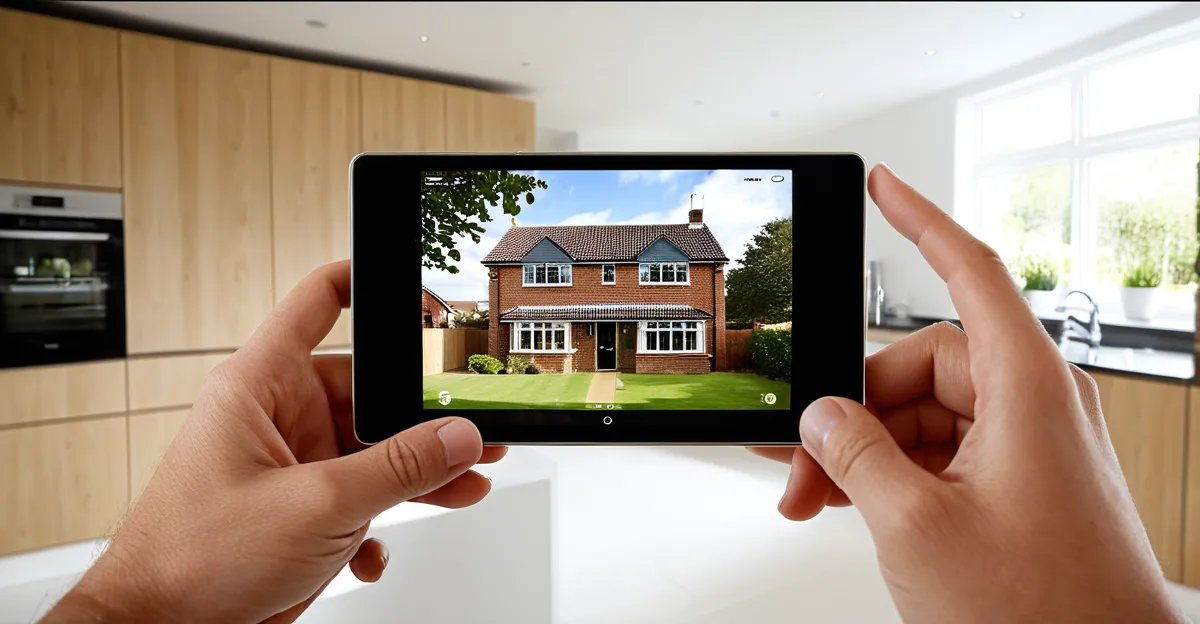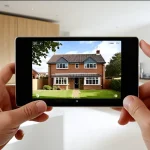Understanding Smart Technology in the Home
In today’s rapidly advancing world, smart home technology has become a key component of modern living, offering a seamless way to automate and control household functions. This technology encompasses a variety of smart devices designed to improve convenience, security, and energy efficiency. From remotely controlled thermostats to voice-activated lights, these devices can transform any home into a technologically savvy haven.
One of the main benefits of home automation is the increased level of control it provides, whether you’re at home or away. You can manage multiple devices from your smartphone, making daily tasks more efficient and reducing energy usage by adjusting settings based on your schedule. Moreover, as trends in smart home technology evolve in the UK, homeowners have access to more innovative solutions that cater to their specific needs. This growing trend continues to push for smarter, more connected homes that enhance every aspect of daily life.
Also to read : How can you incorporate vintage decor into your UK home design?
The integration of smart technology also brings an element of sustainability, as these devices help optimize energy usage. For instance, smart thermostats learn your routine and adjust temperatures accordingly, ensuring that your home remains energy efficient. As the availability of these smart systems grows, so does their potential to make our lives easier and more secure. Thus, staying informed about the latest trends and options within this technological advancement can greatly benefit homeowners looking to modernize their living spaces.
Assessing Your Home’s Readiness for Smart Technology
Before integrating smart technology into your home, it’s essential to conduct a thorough home assessment. Evaluating your existing infrastructure will help determine technology compatibility. Start by checking electrical systems and Wi-Fi coverage, ensuring they can support new smart devices. Many smart devices require stable internet connectivity, so assess your bandwidth to avoid service disruptions.
This might interest you : How can you incorporate vintage decor into your UK home design?
Next, identify compatible devices and systems. Research which products work seamlessly with your home’s current setup. Compatibility is crucial for creating an efficient and cohesive smart home environment. Knowing which systems can be integrated will guide purchasing decisions and streamline the installation process.
Finally, consider installation readiness. Evaluate if additional wiring or network enhancements are necessary. Some devices may require professional installation, while others are suitable for DIY enthusiasts. This assessment ensures your home is fully prepared to welcome the convenience and efficiency of smart home technology.
Effective Strategies to Incorporate Smart Technology
Incorporating smart home technology can significantly enhance your living environment, providing functionality and convenience beyond traditional means. Whether you’re beginning your home automation journey or looking to expand, leveraging these strategies can maximize the benefits smart technology offers.
Starting with Centralized Control Systems
A fundamental step in smart home integration is establishing a centralized control system. These systems, often known as hubs, act as the brain of your smart home, allowing you to manage various devices through a single interface. Popular options include SmartThings, Google Nest Hub, and Amazon Echo Plus. By using a hub, you can streamline commands and create a cohesive network of smart devices across your home.
Smart Lighting Solutions
When considering smart lighting, investing in energy-efficient solutions is key. Brands like Philips Hue and LIFX offer LED bulbs that can be controlled remotely or set on timers. These systems not only provide the convenience of adjusting lights without moving but also contribute to reducing energy usage, aligning with both economic and environmental goals.
Smart Security Features
Enhancing home security with smart technology is increasingly accessible. Key features include smart locks, video doorbells, and motion detectors that send alerts directly to your smartphone. Systems such as Ring and Arlo are popular for their reliability and ease of use, helping to make your home safer while providing peace of mind.
Incorporating these strategies requires careful planning and assessment of your specific needs. Understanding the functionalities of different smart devices and their integration methods ensures a smooth and efficient transition to a smarter home environment.
Product Recommendations for UK Homes
When selecting smart home products in the UK, it’s important to consider top-rated devices that cater to both functionality and ease of use. Various options stand out in the market, offering seamless integration with existing home systems.
One of the most popular smart home devices is the Amazon Echo Dot, a compact, voice-controlled hub that facilitates communication with all compatible systems. Its affordability and versatility make it a favored choice among UK consumers. Similarly, the Google Nest Hub offers a sleek interface and compatibility with numerous smart devices, allowing users comprehensive control over their environments.
For those interested in enhancing their home security, products like Ring’s video doorbells and Arlo’s wireless cameras provide peace of mind through real-time monitoring and alerts. These devices are not only reliable but also feature easy compatibility with existing home networks.
When comparing brands, consider pricing differences for similar functionalities. Although some products feature higher initial costs, the investment often results in durable and effective integration of smart technology. High ratings and positive user reviews often reflect the quality and reliability of these products, ensuring users receive valuable features and benefits tailored to their needs.
Ensure to review installation requirements and compatibility with existing home setups before purchasing, maximizing the convenience and efficiency that smart technology promises.
Installation Tips and Community Resources
Introducing smart devices into your home can be straightforward with the right approach and resources. Understanding the intricacies of installation and where to find help is crucial to ensuring a smooth transition to a smart home environment.
Step-by-Step Guide for DIY Installation
For those opting for a DIY approach, familiarizing oneself with device manuals is essential. Each smart device often has specific requirements, so carefully following the installation guide can prevent mishaps. Generally, DIY installation involves the following steps:
- Unbox and Review Manuals: Before beginning, ensure you have all necessary components and understand the manufacturer’s instructions.
- Position and Mount Devices: Identify the best spots for functionality and aesthetic balance, considering signal strength for Wi-Fi-dependent devices.
- Connect and Configure: Use the device’s app to connect to your home network and configure settings to your preference.
Professional Installation Options
If DIY isn’t for you, consider hiring professionals who offer expertise and save time. Professionals provide assurance that devices are correctly installed, maximizing the efficiency of your smart devices. Many services include a consultation to tailor the installation to your home’s specific needs.
Recommended Online Forums and Community Groups
Engaging with community support can significantly aid those encountering issues or seeking advice. Popular forums like Reddit and communities on platforms like Facebook offer a wealth of knowledge from fellow users’ experiences. These groups can answer specific questions, provide recommendations, and share updates on home automation trends.
Utilizing these resources and tips not only simplifies the installation process but also enhances your journey toward a more connected living space.
Evaluating Cost Savings and Benefits of Smart Technology
Smart home technology promises not only convenience but also significant cost savings. Implementing energy-efficient smart devices can lead to notable reductions in monthly energy bills. For example, a smart thermostat can adjust the home’s temperature based on occupancy, optimizing energy use and potentially cutting electricity costs by up to 15% annually. Long-term savings are a critical factor when considering the return on investment (ROI) for a smart home.
The initial investment in smart home technology may seem substantial, but it often pays off over time. Many homeowners find that the reduction in utility bills, coupled with incentives or rebates from energy companies, accelerates this ROI. Additionally, increased home resale value is an added benefit, making smart home upgrades financially attractive.
User testimonials frequently highlight the cost-effectiveness of smart systems. Real-world experiences indicate that integrated technology not only enhances comfort but also contributes to lower overall household expenses. Such feedback underscores the practical financial benefits and reinforces the value of adopting smart technology for long-term economic gain.
Navigating Local Regulations and Support
Integrating smart home technology in the UK involves understanding the legal frameworks and adhering to compliance requirements. This ensures that your home automation systems operate seamlessly and within the boundaries of the law.
Overview of Relevant Regulations
When implementing smart devices, it’s crucial to remain informed about regulations impacting their usage. The General Data Protection Regulation (GDPR) significantly influences how smart technologies handle personal data. This law mandates that data collected by smart home systems should be used responsibly, with explicit consent from users, and appropriately safeguarded against breaches. Additionally, the UK Building Regulations may influence how certain smart technologies are installed, particularly if they affect the building’s energy efficiency or structural integrity.
Compliance Tips for Smart Home Installations
Compliance is a vital consideration for ensuring that your smart home setup meets UK standards. Begin with confirming that all devices are certified and compliant with local regulations before purchase. Choose products with clear documentation on data privacy and energy efficiency. Update your software regularly to mitigate security risks and ensure device performance remains optimal. If uncertain, seek advice from professionals familiar with local standards and offer compliance consultation services.
Resources for Accessing Regulatory Information and Support
An informed approach is essential. Many governmental and independent organizations provide comprehensive resources and guidance on smart home compliance. The UK Department for Digital, Culture, Media & Sport often offers updates on data regulations and cybersecurity guidelines. Engaging with forums and community groups can also provide insights from individuals experienced in navigating these regulations. By staying informed and utilizing available resources, homeowners can confidently embark on their smart home journey, ensuring legal and efficient installations.




